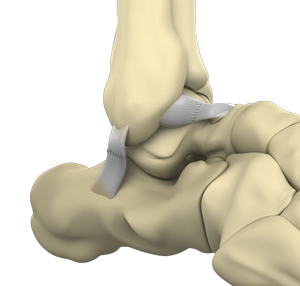
What is a Brostrom Repair?
Brostrom repair is a surgical procedure that involves the repair and reconstruction of injured ligaments on the outside of the ankle to treat ankle instability. The two ligaments of the ankle that are commonly injured are the anterior talofibular ligament (ATFL) and the calcaneofibular ligament (CFL). They are commonly injured following recurrent ankle sprains causing symptomatic instability. These ligaments function by keeping your ankle and foot steady and preventing the ankle from turning inward or twisting.
Indications for the Procedure
When the ATFL and CFL ligaments are stretched or torn, they begin to weaken and become excessively loose resulting in:
- Chronic pain in your ankle
- Repeated ankle sprains
- Unstable ankle
- Ankle that gives way during walking or performing activities
Preparation for the Procedure
Before surgery, your doctor will do a physical exam to ascertain the laxity in your ankle. To confirm this, your doctor may order X-ray or other imaging tests. The preparation process will also involve discussion about:
- Refraining from certain medications and supplements that may complicate surgery
- The need to avoid food and drink past midnight the night prior to your surgery
- The choice of anesthesia to be used during surgery with your anesthesiologist
- Refraining from smoking as it can affect the healing process post surgery
- Buying appropriate shoes with a flat sole and supportive back for the foot
- Arranging for a drive to and from the hospital as well as a help at home
How is a Brostrom Repair Performed?
Brostrom repair can be an open or a minimally invasive procedure and is performed as an outpatient surgery under general or regional anesthesia.
During the repair:
- An incision is made on the outside of the ankle.
- The skin and the underlying tissue are carefully exposed to visualize the ankle joint.
- The ligaments to be repaired are identified and tightened.
- This is achieved by cutting the affected ligaments and restoring it in a tightened position with strong non-absorbable sutures.
- The incision is then closed with dissolvable sutures.
- A dressing and a plaster cast are used from below the knee to the toes to protect and promote healing.
After Surgery Care
Post surgery, you will be transferred to the recovery area where you will rest until the anesthesia wears off. It is normal to notice increased soreness in the operated foot once you are awake. Pain medication is prescribed to relieve pain and stiffness. Your doctor will provide you with series of guidelines on postoperative care and recovery, such as:
- Applying ice packs to the operated area to reduce swelling
- Keeping the foot elevated as often as possible for the first couple of weeks
- Walking with crutches and not bearing weight on the operated foot
- Moving around as often as possible to prevent blood clots
- Instructions on incision site care, diet, bathing, and driving
- Gentle rehabilitation exercises to strengthen muscles and improve range of motion
- Refraining from strenuous activities
- You will be able to return to work in 8 weeks if you are involved in a light manual job or 10 weeks if you are involved in a heavy manual job
- Adhering to scheduled follow-up appointment to monitor your overall progress
Risks and Complications
A Brostrom repair is a relatively safe and effective procedure; however, as with any surgery, it may involve some risks and complications, such as:
- Swelling
- Stiffness
- Infection
- Nerve damage or numbness
- Excessive stiffness or instability
- Excessive bleeding
- Anesthetic complications
- Blood clots (deep vein thrombosis)
- Treatment failure needing revision surgery
Benefits of Brostrom Repair
Key benefits of the procedure include:
- Tight and firm lateral ankle ligaments
- Anatomically and functionally stable ankle
- Low risk of nerve injuries
- High success rate
- Few complications
- Quicker functional recovery
What if I Experience Any Issues During Recovery?
You should call your doctor to seek immediate medical care if you experience the following symptoms despite following postoperative care and instructions:
- Fever of over 100 degree Fahrenheit
- Increasing pain in foot and ankle
- Numbness or pins and needles sensation
- Discharge, smell, or wetness in the operated area
- If you suspect blood clots
- If your toes turn blue or swollen
- You are unable to move your limb due to stiffness

